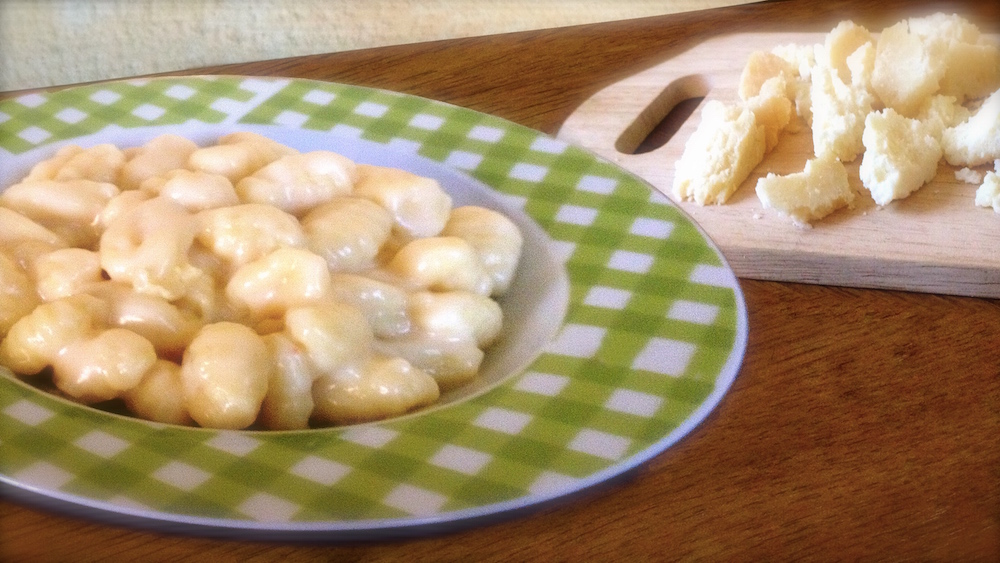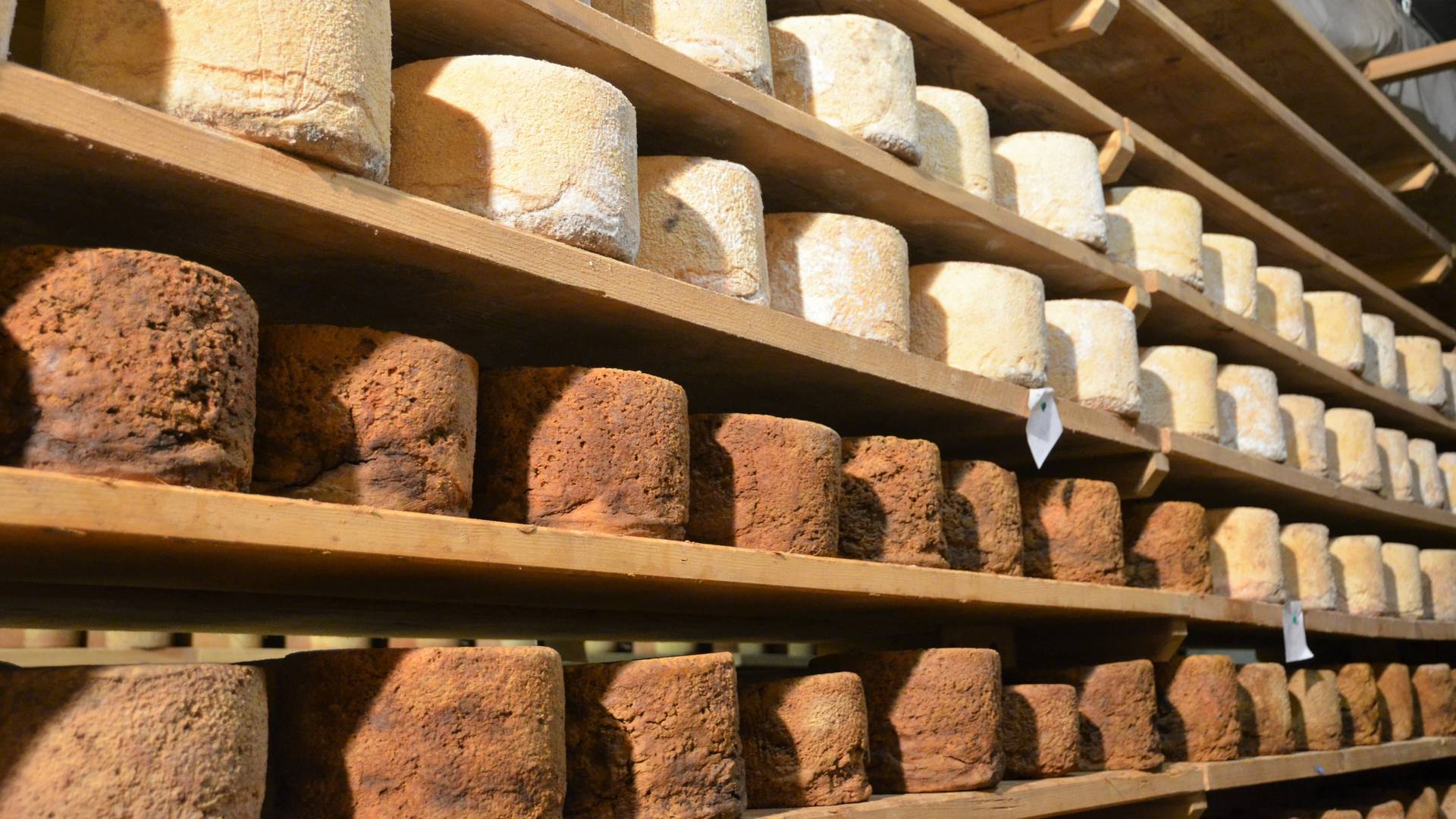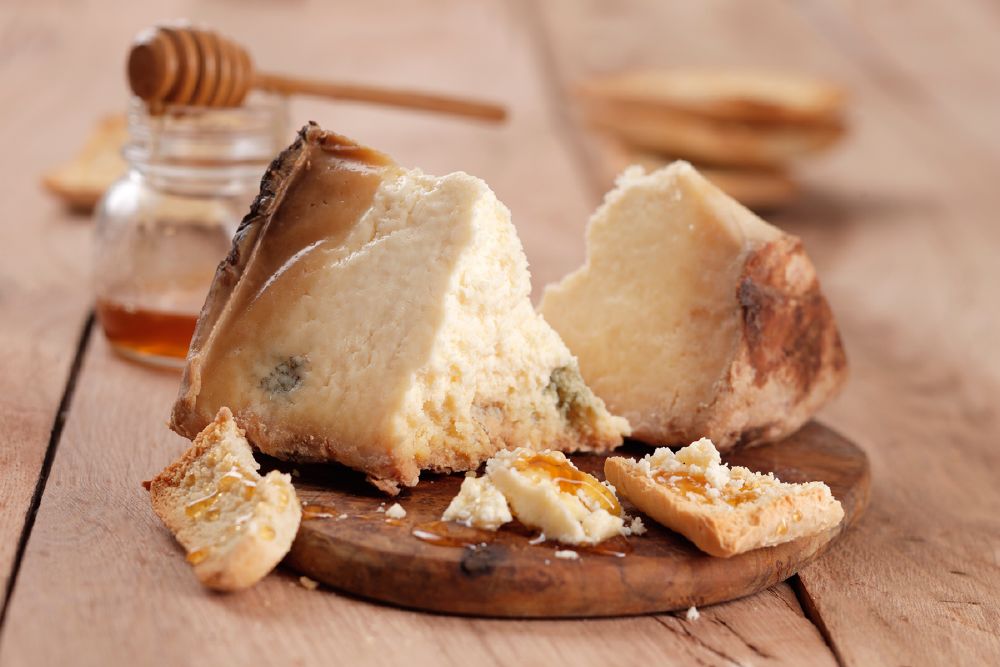
The Castelmagno
Product Type
Production Area
First mention
Quality mark
Obtained on
In the heart of the Grana Valley, in the province of Cuneo, lies a culinary treasure that enchants palates around the world: Castelmagno cheese.
This extraordinary product, known for its thousand-year history and unique taste, is a true milestone in Italian gastronomy.
In 1996, Castelmagno was awarded the prestigious Protected Designation of Origin (DOP.) status, and its authenticity is clearly identifiable through a distinctive marking: a round shape with a missing wedge, with the outline of a mountain superimposed.
There are two main types of this cheese: Castelmagno Mountain Product, with a blue label, available year-round, and Castelmagno Mountain Pasture Product, with a green label.
Becoming a Slow Food Presidium in 2008 (to preserve the original characteristics that would otherwise have been lost with time), mountain pasture Castelmagno brings together small producers and an affineur.
Alpine production takes place in the pastures from the beginning of June until September, a period when the cows graze freely and are not fed silage, feed containing genetically modified organisms or industrial by-products, thus preserving the authenticity of the cheese.
Today it is celebrated in late September at the historic Fall Fair and Festival of Castelmagno Gnocchi in Caraglio.
Name origin
The name "Castelmagno" comes from the village of the same name from which it originates: one of the hypotheses related to the name seems to derive from the Latin "castrum magnum" (the large castle that once controlled the valley, some remains of which can still be seen at the hamlet of Colletto).
Intriguing legend has it that the name Castelmagno comes from Charlemagne (Carlo Magno), who was a great admirer of the "cacio color di sacco" cheese made for him to taste by the Bishop of Saluzzo. However, the authentic origins of this myth are poorly documented.
Castelmagno DOP In the kitchen
A natural and multifaceted treat with an old-fashioned and never-predictable taste
Castelmagno is a very versatile, delicious, aromatic cheese with a pronounced flavor. It can be enjoyed on its own, accompanied by a drizzle of linden or honeydew honey, or used in various culinary preparations.
It is at its best in pasta dishes, of which all-time favorites are gnocchi with Castelmagno fondue (best with a sprinkling of nutmeg) and risotto mantecato with honey and walnuts.
In main courses, it can be the star of pies, fondue with toasted bread croutons, or a rich steaming polenta to be enjoyed on a cold autumn day.
In wine pairing a “conventional” approach is suggested, opting for red wines of the area that are robust (such as Dolcetto di Diano d’Alba, Grignolino d’Asti, Roero Arneis, etc.) or, if long aging is preferred, wines with deep balance, softness and warmth such as Nebbiolo, Barbaresco, Barolo.
Castelmagno DOP: nutrition facts
While rich in protein and vitamins due to the healthy diet of dairy animals, Castelmagno is also a rather high source of fat and salt, so consumption should be limited but not deprived of it altogether!
Energy for 100 g.
Proteins for 100 g.
Carbs for 100 g.
Sugar for 100 g.
Fats
Fiber
Average weight
Related recipes
Organoleptic characteristics
The intense, lingering aromas are reminiscent of the acid of lactic fermentation, dry mountain fodder, and the moist cool room of maturation.
In the fresher forms, the hint of fermented milk stands out mainly.
The characteristic flavor of Castelmagno is reminiscent of aromatic plants, is savory, persistent and takes on strong, spicy contours in the more seasoned forms.
In the mouth it is crumbly and finely grained.
Shape and size
The shape is cylindrical, with the diameter ranging from 15 to 25 cm, the height of the heel ranging from 12 to 20 cm, and the weight from 2 to 7 kg.
On the top is the mark of the Protection Consortium.
Appearance
The rind is reddish-brown, wrinkled and thickened.
The paste is pearly-white, ivory-white or ochre-yellow in color, sometimes with blue-greenish veins of marbling if more seasoned.
At the texture, the dough is crumbly in the fresher forms, and more compact in the seasoned forms.


Castelmagno DOP
A story that
begins in 1277
Its production may date back to the year 1000, but the earliest records date back to the 13th century.
The earliest documented traces of a cheese with the appellation "Castelmagno" date back to the late 13th century, a period when it was used as a means of payment for local taxes, particularly those levied on the trade and consumption of certain goods. However, it is likely that its production began much earlier, around the year 1000.
The ancient notoriety of Castelmagno is evidenced by a legal record dating back to 1277: this document mentioned a dispute regarding the use of some disputed pastures between the municipalities of Castelmagno and Celle di Macra.
In the dispute, Castelmagno lost, and the penalty for defeat resulted in a payment in kind consisting of seven wheels of Castelmagno cheese, strictly from the Alps.
A wheel of cheese represented a unit of exchange and was worth approximately twelve denarii, which highlights the considerable value of this exceptional cheese even in those ancient times.
Production
A natural and multifaceted treat with an old-fashioned and never-predictable taste
Castelmagno “product of the Mountain” is produced throughout the year and using cow’s milk, possibly with small additions of semi-fat sheep and goat milk, raw, semi-hard, and sometimes blue-veined.
Milk from two daily milkings is used in production.
The milk is coagulated at 35-38°C with liquid rennet. The curd, broken down to the size of a hazelnut, is collected and set to ripen (acidify) for a period lasting up to six days.
Next, the dough is crushed, salted and pressed.
Salting is then completed dry by wrapping the mold in fine salt.
The resulting mold will need a maturation period of two to five months in natural, cool, moist caves.

